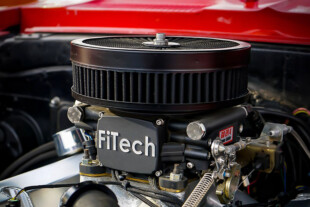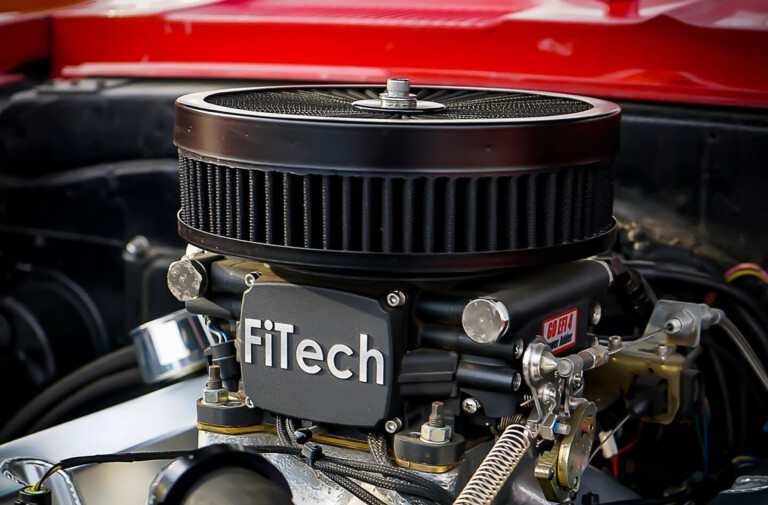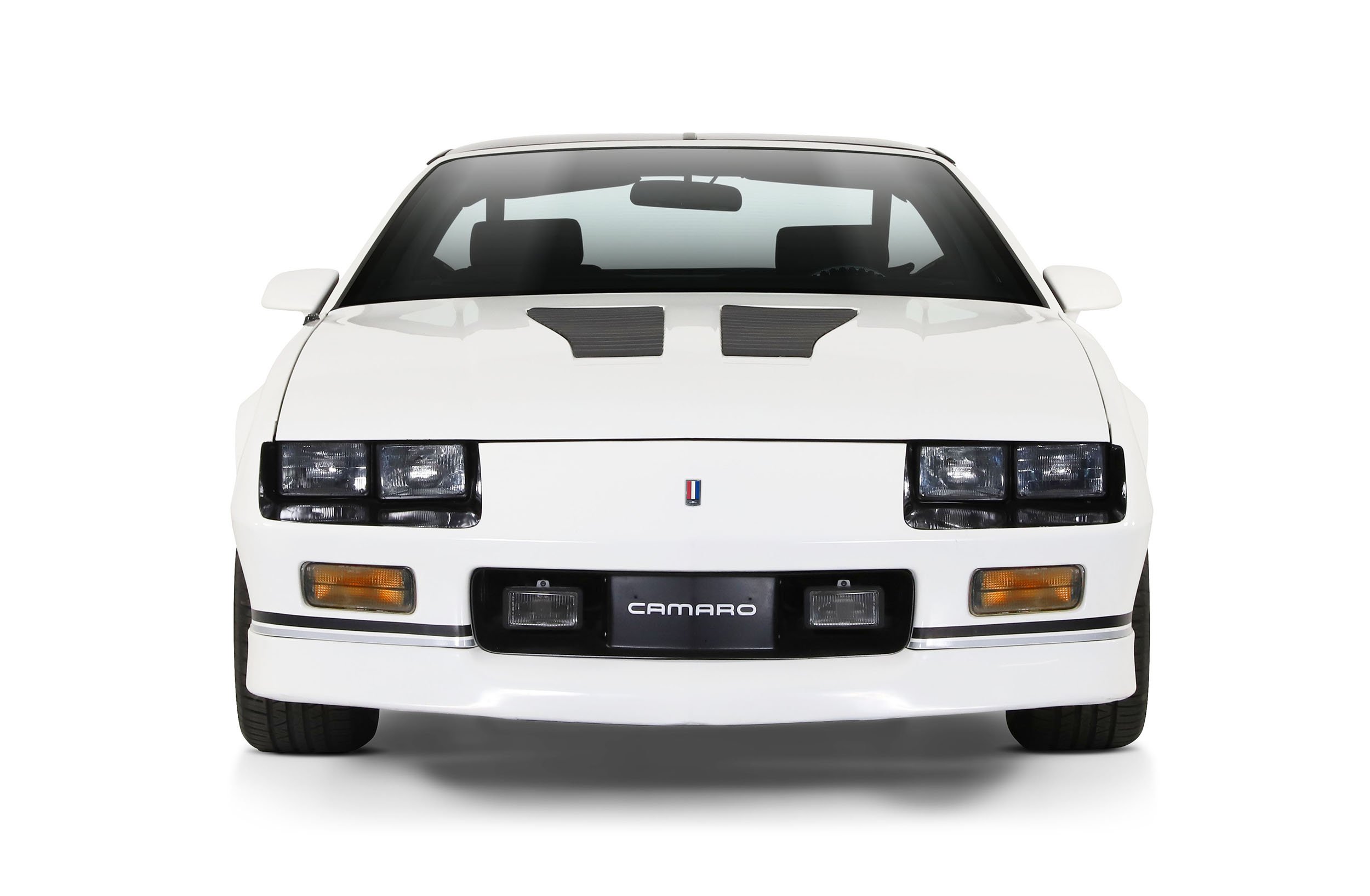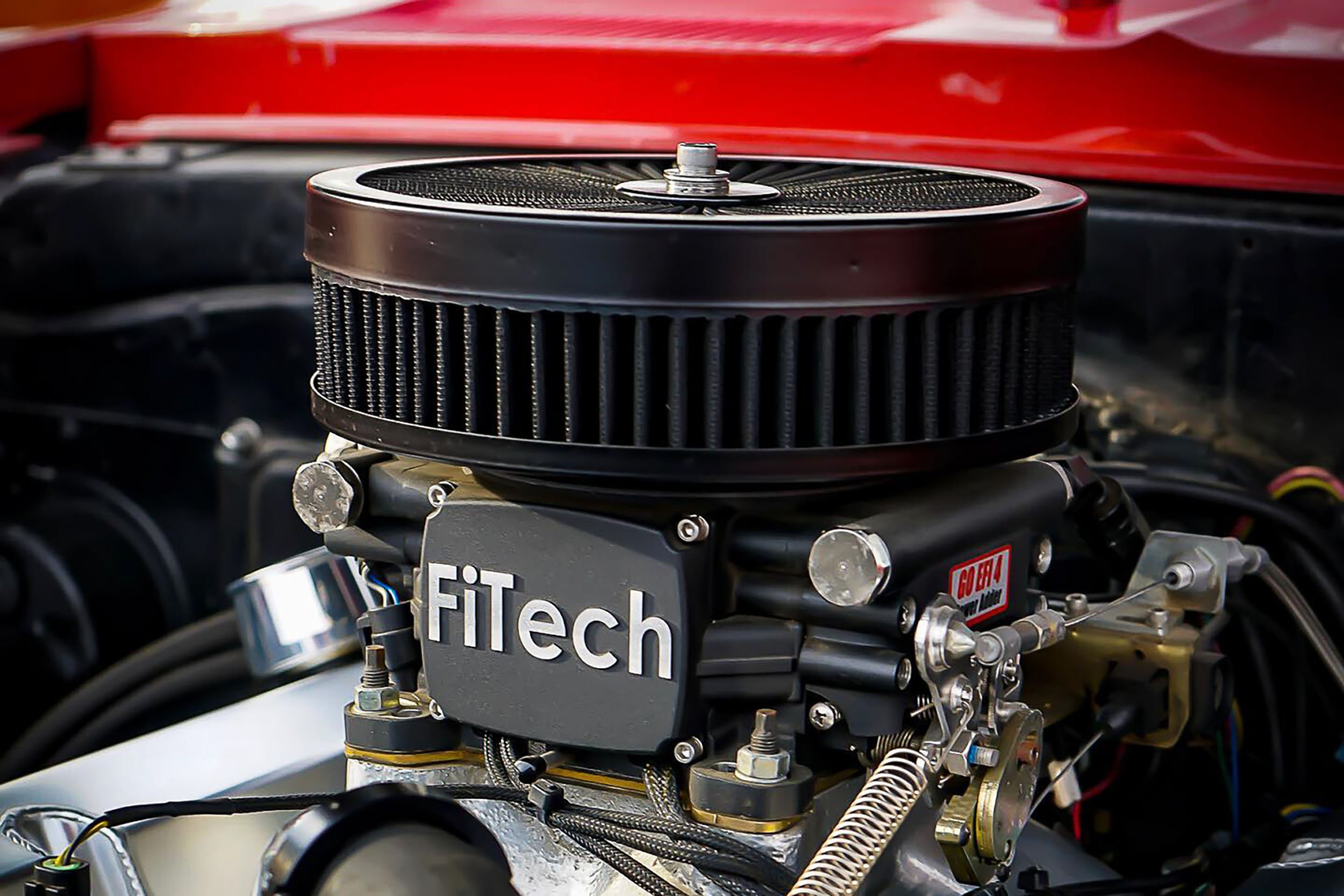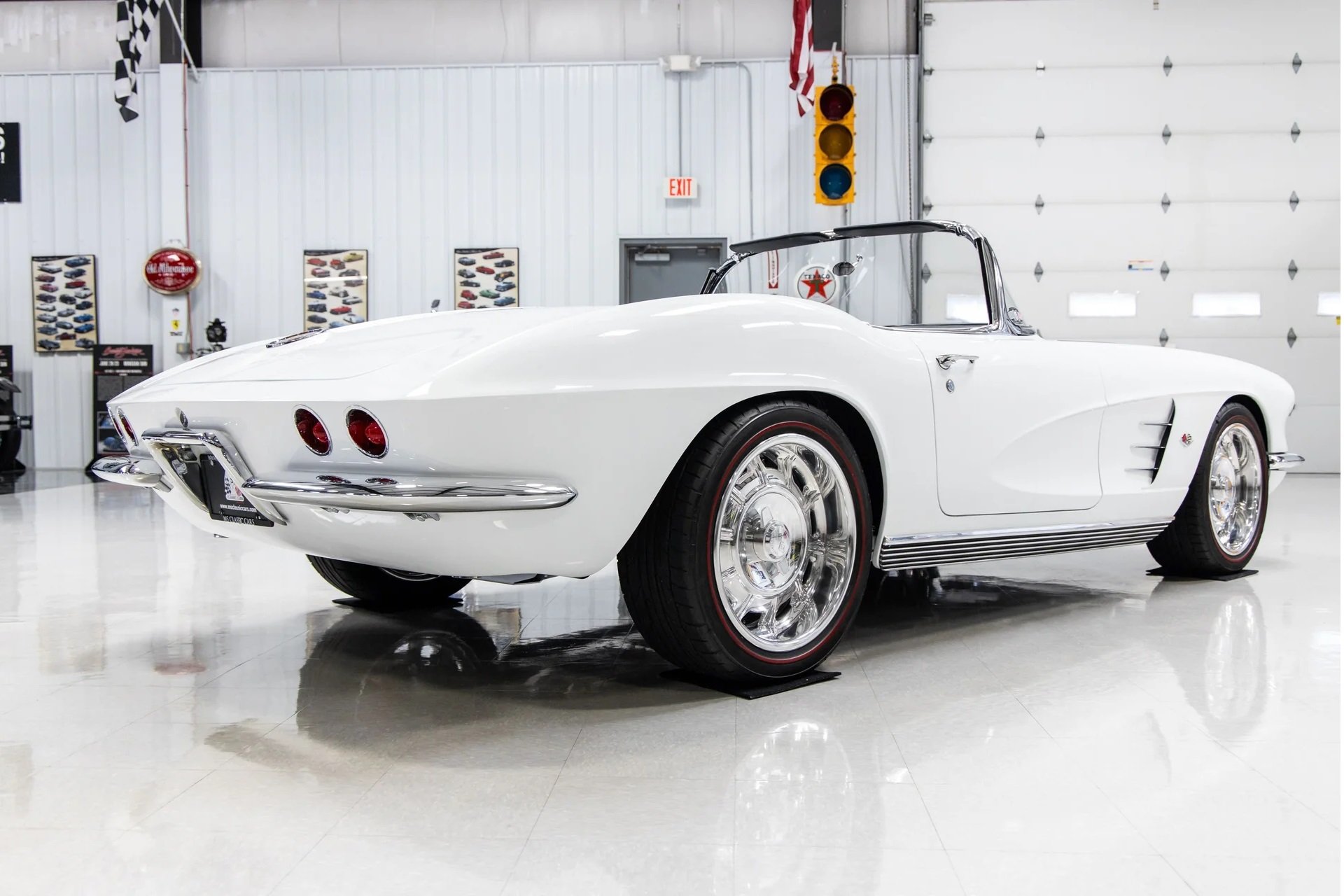Rocker arms are the nervous system of push rod engines: They transmit the camshaft impulses received to the valves, opening them at precisely the right moment hundreds of times every minute. These important engine parts represent some of the best horsepower-per-dollar gains possible, and they are also easy to swap out. However, that doesn’t mean they are to be taken lightly. In this article, we compare shaft mounts to stud mount rockers and we even talk to the experts at COMP Cams, Harland Sharp, and Scorpion so you can help make an educated decision on what’s best for your engine
There are many important factors when it comes to choosing the right type of rocker arm for your application, and not all rocker systems are created equal. There is even a bit of math involved in choosing the right rocker arm ratio, but it doesn’t get more complicated than some simple multiplication. There are several variations when it comes to the rocker arm, including the mounting system that attaches the rockers to the head.

Rocker arm ratio’s are critical when it comes to figuring out the correct rocker for your application. Scorpion laser etches all of their rocker arms with the rocker ratio as seen here.
Rocker Arm Basics
When choosing rocker arms, you must first take into account the rocker arm ratio that you are going to use on your engine. This ratio determines the maximum amount of lift you receive at the valve from a given camshaft, and is vital in making sure that you don’t have valve clearance or spring pressure issues. For example, a 1.5:1 ratio rocker arm working with .400-inch of camshaft lobe lift will produce .600-inch of actual lift, and as long as your push rods and valve springs can handle the pressure, and you have enough piston to valve clearance, you’re in good shape.
Rather than grinding the pushrod and valve stem against each other (lubricated only by the splash oiling delivered by the pushrods), roller tip rockers have rollers at the end of the arm that allow the pushrods to glide across the valve stem tip, making their job that much easier – especially at higher RPM.
While roller tip stud mount rockers are a big improvement over factory pieces for performance applications, under extreme revs and high spring pressure, the stud will bend more than it should and this could eventually lead to stud or rocker failure.
The biggest challenge with respect to building a good rocker arm system is balancing weight and stiffness. The heavier a rocker arm is, the more horsepower is sucked up moving that particular piece. Called parasitic loss, it is a common enemy of engine builders trying to squeeze every ounce of horsepower possible out of their engine.
However, if you make a rocker arm too light, you sacrifice stiffness. Stiffness refers to the ability of the rocker arm to withstand the extreme pressures of high horsepower and deflection (the natural bending of metal). Too much deflection can result in a broken rocker arm – this is where shaft-mounted systems can help.
Most cars and aftermarket applications use standard stud-mounted rocker arms, which use screw-in studs to support the rocker arm independently of the other arms. Many aftermarket rocker arms use roller tips to reduce friction, but still require a stud girdle and guide plate to reduce the excessive deflection and spring pressures seen at higher RPM.

These Harland Sharp rocker arms show the difference in push rod location for a 1.5:1 ratio (left) compared to 1.6:1.
For more extreme applications that will see the strip more than the street, and which will see lift in excess of .750-inch and engine speeds over 7,000 RPM, builders will typically opt for a shaft-mounted rocker system. Shaft-mounted rocker systems eliminate the studs, girdle and guide plate, by placing the rockers in a fixed shaft with a bolted down common-cradle. Doing this increases the rigidity of the pivot point and allows for even higher RPM and spring pressure.
Shaft Systems 101
Shaft-mounted systems are generally designed and engineered for racing applications, according to the experts. A shaft mount system uses a common shaft for pairs of rockers (or more than a pair – depending on the engine type) and uses a larger bearing system that rides around the shaft. With adjustment typically is made not at the center shaft area, but at the end of the rocker, making valve adjustment much easier and increasing stiffness.
Along with design changes, Shaft rockers are generally made from higher grade metals to increase the rigidity from the immense spring pressures associated with large roller lift cams and high RPM.
Shaft Rockers generally feature:
- Increased strength and RPM capability
- Lighter weight, since the shaft is fixed and more sturdy
- No stud to bend, deflection is greatly reduced, so camshaft effective lift at the valve is greater, increasing horsepower.
However, this all comes at an increased cost. Shaft-mounted rocker systems are not for every application, and for your average backyard mechanic, it’s likely overkill. “They are really for full blown race applications,” says Mike Becker, a third generation rocker arm specialist who works for Harland Sharp. Becker uses a stud-mounted rocker system on his ten-second ’72 Nova, and says there won’t be any noticeable difference when it comes to driving the car.
Harland has a few other tricks up their sleeves for shaft rockers. For example, Becker explained that they use twenty-seven needles rather than twenty-five to manufacture their bearing cages, which they claim allows for less friction at the point of rotation. They also use nine different aluminum extrusions to ensure correct valve geometry for each head and engine combination. Additionally, they offer heavy duty roller bearings to prevent wear and increase longevity of their rocker arms – which is one of the reasons that Harland Sharp offers a lifetime warranty with all of their rocker arm systems.
Aside from the mounting system, there are a number of other factors about the actual rocker arm that must be taken into account. The standard stamped steel rocker arm has been the mainstay of internal combustion engines for decades, and the simple ball and socket design was a workhorse of the automotive industry. However, the metal-on-metal contact of this design is a source of friction, heat, and horsepower loss, therefore many improvements have been made.
The most apparent improvement would be the roller tip rocker, which uses a bearing design and transverse-mounted axle to reduce friction, improve power, and lengthen longevity. This design has become a popular upgrade, providing a lot of bang for your buck in terms of horsepower gains and ease of installation. Also, because there is less friction, there is less need for oil delivered to the valve train, further conserving horsepower.
Choosing the Right Rocker Arm System
Rocker arms don’t work on their own, and there are a lot of variables that come into play when selecting a set. The answer to the first question – stud or shaft-mounted – depends mostly on your application.
Chris Douglas of COMP Performance Group offers a lot of good advice when it comes to choosing your rocker arm ratio. He says that while upgrading your rocker arm ratio is a good way to get more power, if you go outside the manufacturer’s specifications, you are greatly increasing the risk of parts failure. He specifically says that rocker ratios need to be discussed on a case-by-case basis with the camshaft manufacturer.
“It’s always best to go with a rocker arm that is close to the recommended ratio for your particular camshaft,” states Douglas. However, Comp Cams has been working on a new roller rocker, the Ultra Pro Magnum. According to Douglas, “This combination results in the best stiffness-to-mass rocker we have ever tested.” Because of the arched nose, this stud-mounted roller rocker will offer much greater stiffness compared to other stud systems and provides another option in lieu of going with a shaft-mounted system.
The material used to manufacture the rocker arm is just as important as lift and friction. The earliest rocker arms were stamped steel, and while they did the job, they were heavy and produced a lot of friction and heat. High strength and lightweight anodized aluminum rocker arms offer lighter weight and less friction but at the sacrifice of some rigidity, according to Becker. Shaft-mounted systems allow for the use of aluminum rocker arms, while providing the extra rigidity needed on high end applications. The extra stiffness provided by the cradle allows for a narrower and lighter body, reducing the moving mass.
Many manufacturers also offer higher strength materials, such as 8650 chrome-moly steel, which Comp Cams uses in their new Ultra Pro Magnum rocker arms. The chrome-moly rocker arm has much greater strength for a given cross-section, while delivering 5% less weight at the valve than most aluminum rocker arms.
When you do upgrade your rocker arms, you have to take into account the pushrods, valve springs, and valve-to-piston clearance. Stock springs were made to only handle so much lift, and if you swap out your rocker arms for something with a higher ratio, that extra pressure could cause spring failure.
Pushrods
We talked to Luke Whalen about Scorpion’s recommendations on pushrods, which are formed out of 4135 chromoly seamless steel tubing and are designed to “last forever” according to Luke. Scorpion feels that pushrods are as important as rocker arms – and that they are a linked combination critical to overall valve train performance.
Similarly, a bent pushrod is an ugly consequence of too much pressure and lift, so you’ll want to make sure that both the pushrods and springs are up to the challenge. That extra lift also means the valve is opening farther and for longer, letting in more air and letting out the extra exhaust. You’ll want to make sure that the valves aren’t tapping the piston tops – it doesn’t take a NASCAR engineer to know you’ll wreck a lot of expensive parts before too long doing that.
Whalen describes Scorpion pushrods as, “a bad ass piece that is finished in a salt bath nitride surface treatment for outstanding wear properties, and rated at 180,000 psi tensile strength.”
The tips of the push rods are constructed of 8260 bar stock, and are case hardened and cyrogenically treated and tempered for greater impact/wear resistance. Offered off the shelf in 5/16” and 3/8” with 5/16” ball tip or custom-made, these push rods can be ordered from SRP. COMP also offers a full line of pushrods as well, if you are choosing COMP rockers.
You are now armed with a little more knowledge when it comes to choosing a rocker arm system, and you can choose wisely between a stud-mounted system and a shaft-mounted system. The advantages and disadvantages may not seem readily apparent, but with manufacturers like Harland Sharp, Scorpion, and COMP Performance Group constantly improving on decades-old technology, a lot of the hard work has been taken out of choosing the right rocker system.







